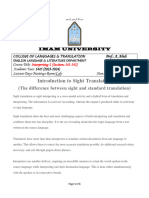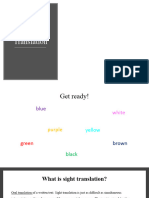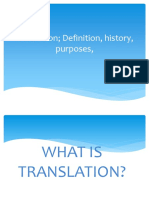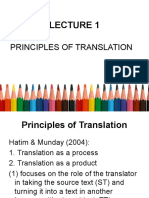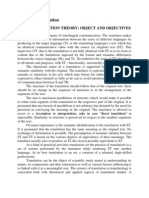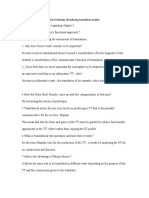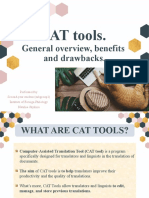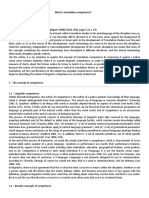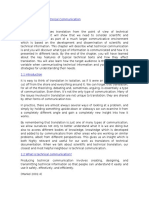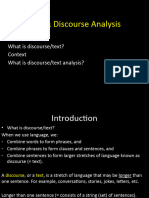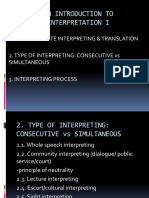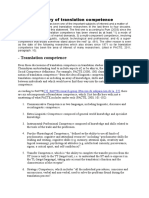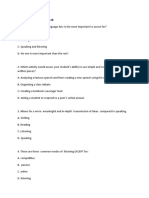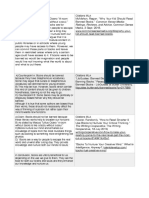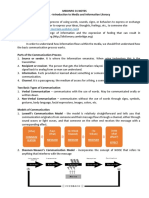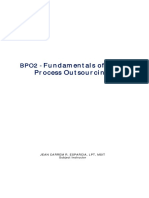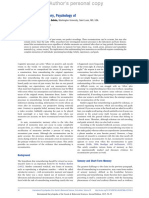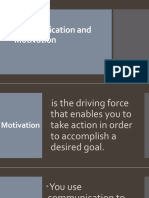0% found this document useful (0 votes)
720 views14 pagesTranslation Competencies Overview
This document discusses translation competencies and models. It summarizes Pym's multicomponential model of translation competencies, which includes 9 competencies such as source language competence, target language competence, interlinguistic competence, and transfer competence. It then discusses Pym's minimalist approach, which focuses on two core competencies: the ability to generate multiple viable target text options, and the ability to decide on and justify a final translation based on contextual factors. Students are asked to respond to a reflection question illustrating Pym's minimalist model with an example and discussing how competencies guided the process.
Uploaded by
xunus xCopyright
© © All Rights Reserved
We take content rights seriously. If you suspect this is your content, claim it here.
Available Formats
Download as PPTX, PDF, TXT or read online on Scribd
0% found this document useful (0 votes)
720 views14 pagesTranslation Competencies Overview
This document discusses translation competencies and models. It summarizes Pym's multicomponential model of translation competencies, which includes 9 competencies such as source language competence, target language competence, interlinguistic competence, and transfer competence. It then discusses Pym's minimalist approach, which focuses on two core competencies: the ability to generate multiple viable target text options, and the ability to decide on and justify a final translation based on contextual factors. Students are asked to respond to a reflection question illustrating Pym's minimalist model with an example and discussing how competencies guided the process.
Uploaded by
xunus xCopyright
© © All Rights Reserved
We take content rights seriously. If you suspect this is your content, claim it here.
Available Formats
Download as PPTX, PDF, TXT or read online on Scribd
/ 14















